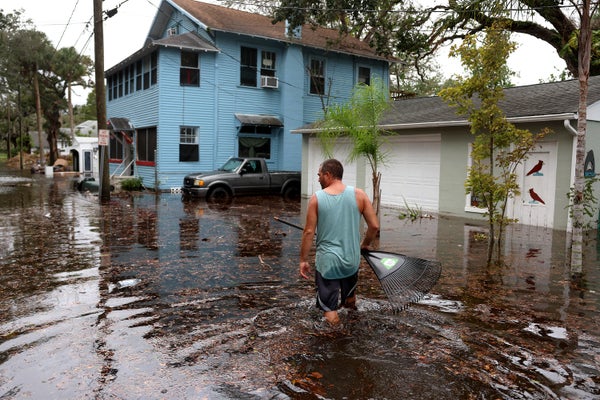Hurricanes are expected to grow stronger as the climate warms, with more of them spinning up into major storms. But it’s not just the biggest cyclones that are worsening. New research finds that weak tropical cyclones, including tropical storms and low-category hurricanes, are intensifying over time.
The study, published Wednesday in the journal Nature, uses data collected by thousands of scientific instruments scattered across the world’s oceans. Tropical cyclones leave telltale signs in the water, speeding up ocean currents as they churn through. Scientists can estimate a storm’s wind speeds by measuring these currents.
It’s among the first studies to use direct ocean measurements, rather than satellite data, to track changes in the intensity of tropical cyclones over time.
On supporting science journalism
If you're enjoying this article, consider supporting our award-winning journalism by subscribing. By purchasing a subscription you are helping to ensure the future of impactful stories about the discoveries and ideas shaping our world today.
That’s important, the authors say. Satellites have been invaluable for tracking hurricane activity around the world over the last 40 years—but they have their limitations. Satellites can show scientists where storms form and where they’re moving, but they’re less reliable when it comes to exact measurements of a storm’s intensity.
Scientists often rely on aircraft missions to collect up-close information about a hurricane’s wind speed and other physical characteristics. But it’s not possible to gather that kind of data for every individual cyclone that forms around the world.
This makes it difficult to track long-term trends in hurricane intensity.
Still, some previous studies have attempted it—and there are some indications that tropical cyclones are getting stronger over time. A 2020 study found that the proportion of hurricanes that turn into major storms—a Category 3 or higher—has grown over the last few decades.
Meanwhile, climate models indicate that hurricanes should continue strengthening as the planet keeps warming.
The new study adds a line of direct evidence that tropical cyclones are getting stronger. The ocean measurements suggest that tropical cyclones are likely intensifying at a rate of around 1.8 meters per second each decade. The study suggests that this strengthening trend holds true for storms all over the world.
The study does have one major limitation—the findings are only reliable when it comes to weak tropical cyclones, such as tropical storms and Category 1 hurricanes. That’s because there just hasn’t been enough data collected for stronger storms, meaning there’s not enough evidence yet to say for sure.
But in a comment on the new research, also published Wednesday in Nature, atmospheric scientist Robert Korty says he suspects the findings are probably true for stronger storms as well. For one thing, he notes, the measurements included in this study simply constitute snapshots in time. Some of these storms may have been weak when they passed over the ocean sensors but would later intensify into bigger storms.
That means “some of the data do actually correspond to stronger storms,” he writes.
Reprinted from E&E News with permission from POLITICO, LLC. Copyright 2022. E&E News provides essential news for energy and environment professionals.
